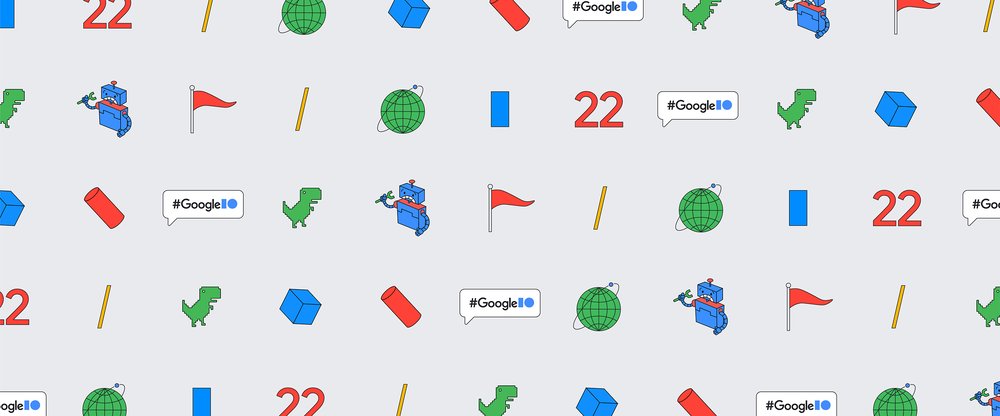ICYMI: Mobile & Beyond; 20:2022
Week 20

Android 13… is coming this fall with a multi-device world in mind. With the next version of the world’s most popular mobile OS will be guided by the principles of the phone being at the center, extending the experience beyond the phone, and the devices working better together across the ecosystem. Some new features will include RCS standard for messaging, the resurrection of Google Wallet, and enhancements of large screen support. Plus a ton more… maybe I should have done a separate letter just for Google I/O (like I used to). Here’s the Android 13 replay and the Android L replay.
Pixel 6a… was also announced for a release in late July. The first of the A-series to be built with the Tensor SoC, the 6a carries over the substantial redesign from its flagship sibling. It also includes other premium features such as Real Tone, Magic Eraser, and Live Translate. I’ve been waiting for the A-series to drop since the original announcement of the Pixel 6 last fall — ready to upgrade my Android tester! Here’s the Pixel 6a replay.
Pixel Watch… is finally more than a rumor and will be coming this fall. Constantly teased throughout the keynote, the announcement was more of a preview. Shipping with Google’s own Wear OS, it will support Maps, Assistant, Wallet, and Home. As to be expected, it will have deep integration with Fitbit — also owned by Google. It was shortly followed by a surprise preview of the Pixel Tablet, which will be released sometime next year. Here’s the Pixel Watch replay and the Pixel Tablet replay.
iPod RIP. Apple announced the end of the road for the iPod touch. The final iteration of the iconic music player will be available “while supplies last.” And as many users have shifted to carrying their music on the phones, it’s no surprise that Apple decided to pull the plug. But for many users and developers alike, it served as a gateway to iOS — which is why I wanted to include it. The iPod is dead, long live the iPhone.
iPhone USB-C? Apple may be ditching it’s Lightning port in favor of USB-C. Based on a supply-chain survey by Apple analyst Ming-Chi Kuo, the change likely won’t be seen for another 1–2 years. But between the regulatory push in the EU for interoperable chargers and Apple already having made the switch on other devices, it’s not so difficult to believe. And as a multi-device user and frequent traveler, it’s a standardization that I welcome with open arms.
From the desk of…
As I mentioned above, there was a ton of news that came out of the Google I/O keynote this year and it took some time to unpack. In fact, the release of this issue dragged a bit because of I needed to rewatch some of the key announcements as well as read other tech writers’ takes. It was a lot to take in, but the main thing that I was struck by was the focus on the multi-device world that is powered by Google’s technologies — and the decision to be more assertive in the hardware space.
Looking at the landscape both here in the States and abroad, I don’t think Made by Google devices will be stealing market share from OEMs like Samsung or Xiaomi anytime soon. But that’s not really the point. The point, I believe, is for Google to demonstrate their vision for Android and Wear OS by setting the standard on their very own products. And with all of the various OEM skins and third-party apps floating around, as a designer, I welcome the purity that I expect Google to offer.
It’s not enough for Google to create partnerships with hardware providers like Samsung and Microsoft nor is it enough for Material Design to offer guidelines for phones, tablets, foldables, and watches. As Apple has proven, the standard is better understood when the software maker itself leads by example.
Articles
- Android 13: Every New Feature Revealed at Google I/O (CNET)
- Google's Pixel 6a offers Tensor power for $449 (Engadget)
- Google Pixel Watch: Google announces its first flagship watch (Android Authority)
- The iPad is dead (TechCrunch)
- USB-C iPhone 15 in the works, claims Kuo, following supply-chain survey (9to5Mac)
Events
- [Jun 6–10] WWDC 2022 (Apple)
- [Jun 15–16] VOICE Global 2022 (Modev)
Resources
- [Guidelines] Readability: The Optimal Line Length (Baymard Institute)
- [Podcast] Breaking Down the Biggest News From Google I/O (The Daily Charge)
- [Report] Q1 2022: Store Intelligence Data Digest (Sensor Tower)
- [Report] This Week in Apps #113 - That's Pretty Ambitious! (AppFigures)
- [Video] Google I/O 2022 Keynote (Google)
